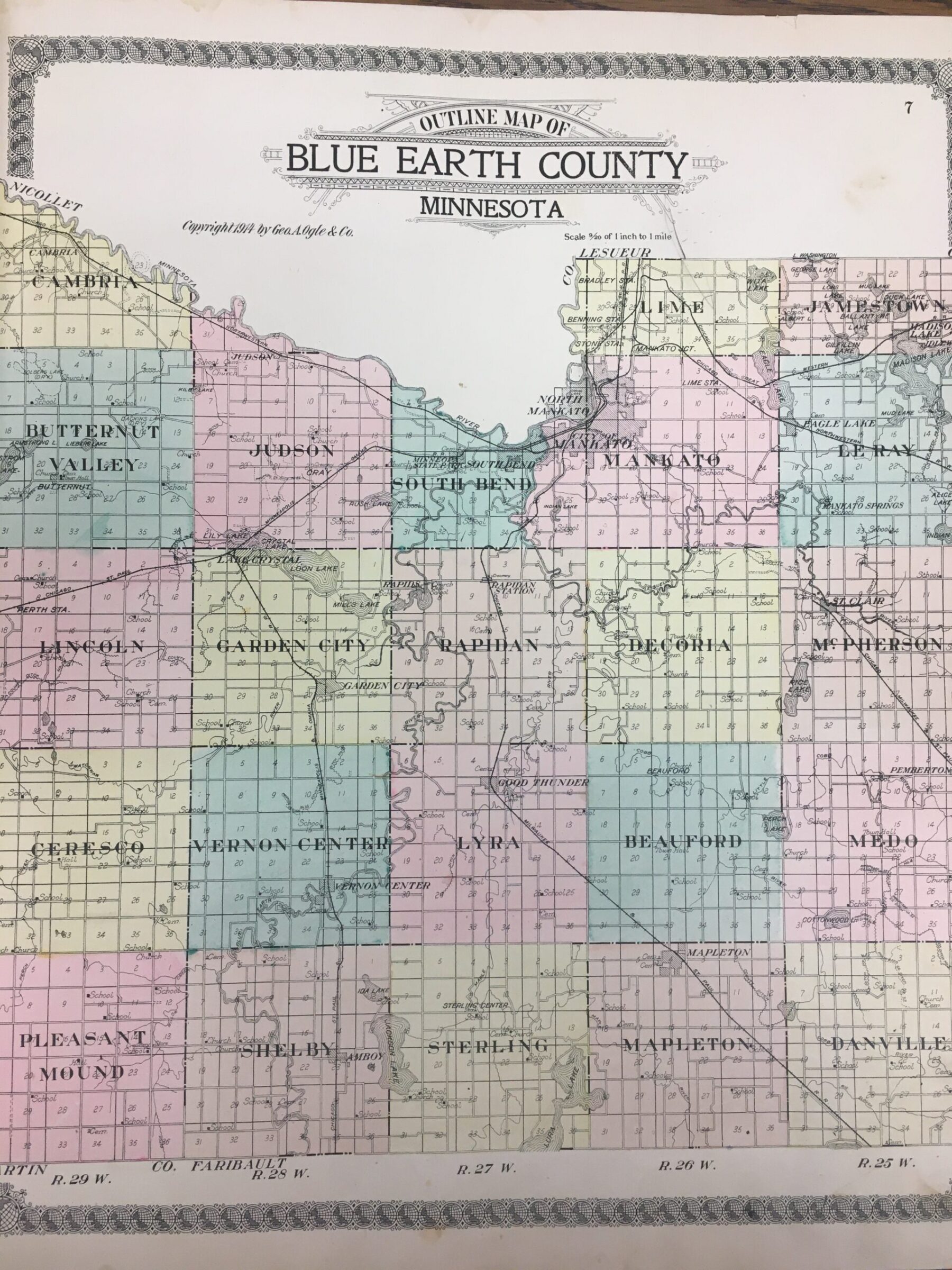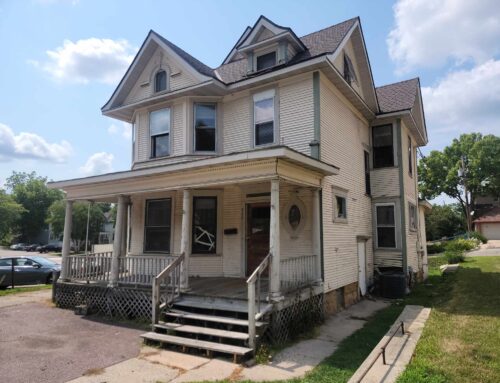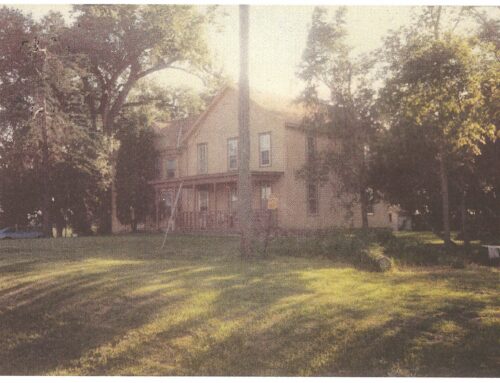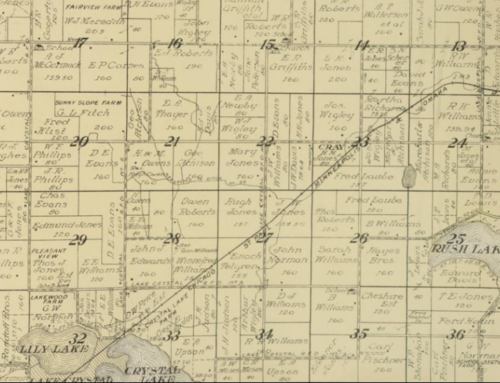By Hilda Parks 
Pioneers settled and cleared the land. Crops were planted, and farming began. Sawmills and blacksmith shops were soon needed. A post office was set up in a home, a general store was built, perhaps a school or a church soon joined them, and soon there was a small settlement. Numerous such villages were scattered across Blue Earth County, only to disappear as quickly as formed. Some were laid out on paper but never came to fruition. Others grew haphazardly, and the surrounding area could not sustain them. The route of the railroad ultimately determined the fate of several.
A few of those once active villages linger, with a building or two still standing: Willow Creek, Butternut, Beauford, Smith Mill. Others have disappeared, with only a few memories and mentions in historic records: Little Cobb, Hope, Upton, Champion Mills.
There was Tivoli, six miles east of Mankato, near the LeSueur River. Halfway between Mankato and the Winnebago Agency, the area was surveyed and platted in 1858. The plat map laid out streets, a park, and lots designated for a bank and churches. Moses Bennett had already built a sawmill at the site. A Congregational Church was organized in 1857 or 1858. However, hopes for a town to develop had been laid aside by 1870. The stagecoach line from Mankato to Minnesota Lake continued to stop regularly. A post office existed until 1900 the mail arriving on the stagecoach. Social notes, items of interest from Tivoli, continued to appear in the Free Press until 1936. Today all that remains is the Tivoli Cemetery.
In the southwest corner of the county, the township of Pleasant Mound was organized in 1858. First named Otsego, its name was changed to Willow Creek, and then Pleasant Mound, referring to the mounds that run north to south through the township, as high as 75 feet. Records speak of a town created in 1864, and by 1889 it had a store, blacksmith shop, and creamery. However, it is sometimes difficult to determine if records refer to a separate community of Pleasant Mound, or to Willow Creek, also in Pleasant Mound Township. There was a post office of Pleasant Mound from 1863-1902, a stagecoach itinerary included Pleasant Mound, and Social Notes appeared in the Free Press until 1909. Any dreams of growth would have soon died, with the growth of Willow Creek in the same township, and Shelbyville, just east of Pleasant Mound.
The town of Shelbyville was platted in 1856 near the Fairbault County line, two miles south of present-day Amboy. Laid out on either side of the Blue Earth River by Rev. John W. Powell, a pioneer Methodist preacher, he names it for his home town, Shelbyville, Indiana. By 1859 the little community had a general store, two sawmills, a blacksmith shop, and a number of houses. Judge Lorin Cray, who grew up in the area, remembered the schoolhouse, built in 1857, had neither floor nor windows. Light came from the open door and the cracks between the logs. However, a much finer school was built in 1868. Beginning in 1859, a weekly stage route passed through the small town. By 1863, a daily mail route ran from Mankato to Garden City, Vernon, Watonwan, Willow Creek, Pleasant Mound, Shelbyville, and on to Winnebago and ultimately Fairmont. Judge Cray remembered that the postmaster publically read the news from the weekly St. Paul paper. According to memories of Lew Sampson, published in the Free Press in 1944, Shelbyville was known as “one of the wild and wooly towns of the West.” The stage, carrying the mail, regularly encountered “Road Agents” and bullets. Shelbyville gradually disappeared after 1879 when the railroad passed east of it, and the depot was built at the new town of Amboy. The post office continued until 1881.
The township of Vernon Center had the beginning of several small communities: Prion, Montevideo, Myrna. Little is known about these communities. For example, most of what is recorded of the town of Myrna appeared on a sign once posted five miles west of Vernon Center. It existed from 1857 to 1879. In 1892 there was a population of 30, with eight homes, a general store, and a blacksmith shop. The post office, which operated from 1873 to 1900, was located in homes. Until 1879 a mail route ran from Lake Crystal, Watonwan, Myrna, and continued to Willow Creek, Champion Mills, Cornet, and further south. When that route was discontinued in 1879, mail was brought daily from Vernon. An item in the Social Notes in 1881 reported that it took just three days to get the Free Press from Mankato to Myrna. The first day the mail went by train to The Lake (Lake Crystal), the second day by train to Vernon, the third day by Pony Express to Myrna. Three days was “just one day longer than it would take an ox team to make the round trip.” A stage was still running to Vernon Center three times a week in 1892, costing $.25. The sign that was posted at the site of Myrna included two unexpected items: that Myrna was the Area GAR (Grand Old Republic) Headquarters, and that the first County Fair in Minnesota was held there. There is no explanation for the mention of the fair. However GAR Headquarters were formed in many locations throughout Minnesota in the last half of the 19th century, some very short-lived. These posts often filled social needs in the small isolated communities.
Three small villages once existed in the township of Medo: Little Cobb, Cream, and Medo. The County Commissioners planned for the town of Medo in 1858, even while it was still part of the Winnebago reservation. The first settlers arrived in May 1863, the day the Indians left. The town was formally organized that September. It would have stores, churches, a blacksmith shop, a feed mill, and a post office in 1867. When the post office closed in 1904, the town disappeared.
Although never a village, the area called Volksville, located on the Blue Earth/LeSueur County Line in Jamestown Township was a name known in the area. About 1867 the Volk brothers built a two-story building, called Volks Hall. There was a meeting hall on the second floor and a cooper shop on the first. A sawmill, shingle and planing mill joined the cooper shop, all powered by steam, using water from a millpond. By 1869 the Volk’s had a factory manufacturing furniture, white oak staves for the cooper shop, and wooden farm implements. A grist mill for grinding corn and feed was added later. A fire in February 1880 did extensive damage. The buildings were finally torn down in 1902.







Very Nice Website!
Thank you all – for the great work every one has done to archive and preserve Blue Earth County’s history..
Thanks for the article! I recently picked up an atlas from 1890 and was baffled by the sheer amount of Blue Earth County villages I’d never heard of.